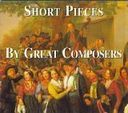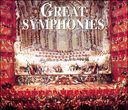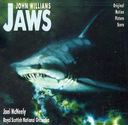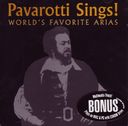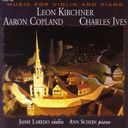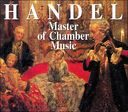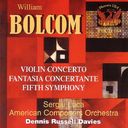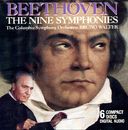Westminster Abbey Choir Ludford: Missa Videte miraculum
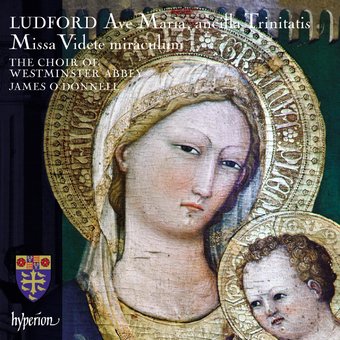
| Price: | $18 |
| List Price: |
|
| You Save: | $1.98 (10% Off) |
|
Brand New
|
CD Details
- Released: March 2, 2018
- Originally Released: 2018
- Label: Hyperion
Tracks:
- 1.James O'DonnellKyrie: I. Kyrie
- 2.James O'Donnell & Westminster Abbey ChoirKyrie: II. Kyrie
- 3.James O'DonnellKyrie: III. Kyrie
- 4.James O'Donnell & Westminster Abbey ChoirKyrie: IV. Christe
- 5.James O'DonnellKyrie: V. Christe
- 6.James O'Donnell & Westminster Abbey ChoirKyrie: VI. Christe
- 7.James O'DonnellKyrie: VII. Kyrie
- 8.James O'Donnell & Westminster Abbey ChoirKyrie: VIII. Kyrie
- 9.James O'DonnellKyrie: IX. Kyrie
- 10.James O'Donnell, Westminster Abbey Choir & Robert MacdonaldAlleluia. Ora pro nobis: I. Alleluia
- 11.Robert MacdonaldAlleluia. Ora pro nobis: II. Ora pro nobis, pia virgo Maria
- 12.James O'Donnell, Westminster Abbey Choir & Robert MacdonaldAlleluia. Ora pro nobis: III. Ora. Alleluia
- 13.James O'Donnell, Mark Dobell & Westminster Abbey ChoirHac clara die turma: I. Hac clara die turma
- 14.James O'Donnell & Westminster Abbey ChoirHac clara die turma: II. Salutis causa, vitae porta
- 15.James O'Donnell & Westminster Abbey ChoirHac clara die turma: III. Ave Maria, gratia Dei
- 16.James O'Donnell & Westminster Abbey ChoirHac clara die turma: IV. Virgo et gravida mater intacta
- 17.James O'Donnell & Westminster Abbey ChoirHac clara die turma: V. In me quomodo
- 18.James O'Donnell & Westminster Abbey ChoirHac clara die turma: VI. Ex quo atque nata sum incorrupta
- 19.James O'Donnell & Westminster Abbey ChoirHac clara die turma: VII. Flatu sacro plena
- 20.James O'Donnell & Westminster Abbey ChoirHac clara die turma: VIII. Intra tui uteri claustra portans
- 21.James O'Donnell & Westminster Abbey ChoirAve Maria, ancilla Trinitatis: I. Ave Maria, ancilla Trinitatis
- 22.James O'Donnell & Westminster Abbey ChoirAve Maria, ancilla Trinitatis: II. Ave Maria, doctrix apostolorum
- 23.James O'Donnell & Westminster Abbey ChoirAve Maria, ancilla Trinitatis: III. Et impetra nobis omnium
- 24.James O'Donnell, Westminster Abbey Choir & Jonathan BrownMissa Videte miraculum: Ia. Gloria in excelsis Deo
- 25.James O'Donnell & Westminster Abbey ChoirMissa Videte miraculum: Ib. Domine Deus, Agnus Dei
- 26.James O'Donnell & Westminster Abbey ChoirMissa Videte miraculum: Ic. Qui tollis peccata mundi, miserere
- 27.James O'Donnell, Westminster Abbey Choir & Jonathan BrownMissa Videte miraculum: IIa. Credo in unum Deum
- 28.James O'Donnell & Westminster Abbey ChoirMissa Videte miraculum: IIb. Visibilium omnium
- 29.James O'Donnell & Westminster Abbey ChoirMissa Videte miraculum: IIc. Et incarnatus est
- 30.James O'Donnell & Westminster Abbey ChoirMissa Videte miraculum: IId. Crucifixus etiam pro nobis
- 31.James O'Donnell & Westminster Abbey ChoirMissa Videte miraculum: IIe. Et resurrexit tertia die
- 32.James O'Donnell & Westminster Abbey ChoirMissa Videte miraculum: IIIa. Sanctus
- 33.James O'Donnell & Westminster Abbey ChoirMissa Videte miraculum: IIIb. Pleni sunt caeli
- 34.James O'Donnell & Westminster Abbey ChoirMissa Videte miraculum: IIIc. Osanna
- 35.James O'Donnell & Westminster Abbey ChoirMissa Videte miraculum: IVa. Benedictus
- 36.James O'Donnell & Westminster Abbey ChoirMissa Videte miraculum: IVb. Osanna
- 37.James O'Donnell & Westminster Abbey ChoirMissa Videte miraculum: Va. Agnus Dei I
- 38.James O'Donnell & Westminster Abbey ChoirMissa Videte miraculum: Vb. Agnus Dei II
- 39.James O'Donnell & Westminster Abbey ChoirMissa Videte miraculum: Vc. Agnus Dei III
Product Description:
Such devotion to Sayncte marye echoes the intensity of the English Cult of Mary, which reached its apogee during the period of Ludfords employment in Westminster. Indeed, votive liturgy to Mary would have occupied the major part of Ludfords musical activity here. Accordingly, the present collection represents three archetypes of English sacred polyphony expressed in Marian worship: the daily Lady Mass (tracks 1-20), the votive antiphon (tracks 21-23) and the festal Mass for a Marian feast (tracks 24-39). Whilst the music here was likely composed for use at the Royal Palace, the shared employment of singers and the movement of choirs and organists between institutions in Westminster suggest that the same music may have been performed at St Margarets Church or in the Lady Chapel of Westminster Abbey itself.
Ludford was resident in Westminster by 1517 and is recorded at St Stephens in 1524 with his formal contract of employment dated 30 September 1527. Around this time, Ludford established permanent residence on Longwolstable Street, immediately north of the Palace walls, roughly on the site of the iconic Elizabeth Tower (which houses Big Ben). Following the dissolution of the college and chapel in 1547, the employees of St Stephens were pensioned off, and Ludford was able to fortify his connections with the Parish Church of St Margaret (in the shadow of the Abbey and St Stephens) where he and his wife had hired a pew since 1525. Ludford became churchwarden here for a two-year period from May 1552, and following his death in August 1557, was buried close to his first wife Anne, in the vaults of the church. A little more than a year later, the same setting would provide the resting place for fellow composer John Sheppard (c1515-1558), and in 1574, for Robert White (c1538-1574).
The chronology of Ludfords uvre is not straightforward, though its likely that his surviving music was all composed prior to 1530, thus providing a useful connection between the earlier style of Robert Fayrfax (1464-1521) and the progressive John Taverner (c1490-1545) and John Sheppard. Ludfords music is perhaps more florid and melismatic than that of Fayrfax, and the composer is particularly attentive to the control of timbre and variety through alternating combinations of vocal groups. For Tudor composers, the management of voices through the daily liturgy conceals a potential dichotomy: the demand for an ornate, elaborate musical style on the one hand, and an obligation to nurse the stamina of singers (particularly trebles) on the other. Of course, much pre-Reformation church music already belonged to a culture of alternatim performance, where plainchant and polyphonic verses are exchanged between distinct groups of singers or soloists. But the demand for ornate polyphonic music had grown in conjunction with the development of Lady Chapel choirs serving the daily Lady Mass, and so it was inevitable that a distinct style of polyphony would evolveone that attended to both of these demands. With its doubled choruses of principals emulating the choir, the Tudor organ was central to this development, and by the start of the sixteenth century was performing a significant role in the Lady Mass at major institutions across the country. For example, in 1502, on the death of Prince Arthur (Henry VIIs eldest son) at Ludlow: the Bishop of Chester song our Ladyes Masse, which was song with children, and prickt songue [written polyphony] with organes. The significance of the organ at St Stephens is evident from the dissolution inventory which records iij payer of organs in the upper chapell and one old payer of organs in the nether chapell.
Rhythmic melodies known as squares were assembled over the course of the fifteenth and early sixteenth centuries to provide memorable musical material for such regular services. These melodies were extracted from earlier polyphonic compositions, recycled, and arranged to facilitate the performance of the daily ferial Mass, cultivating alternatim performance practices between vocal polyphony (in three parts), and organist, who would improvise alternate versets upon the square. The survival of a complete cycle of seven Lady Masses by Ludford (in four partbooks now in the British Library) is unique. Ludford employs a distinct Kyrie square for each Mass (for the Ordinary items), with a soloists partbook providing alternating monophonic versets upon which to improvise (Kyrie, Gloria, Credo) at the organ, together with the relevant plainchant, which was either sung or played. The leather binding of these partbooks is embossed with the arms of Henry VIII and Catherine of Aragon, and the books were catalogued in the Royal Library at Westminster as early as 1542 (Bookes of priksong masses foure), strengthening their association with the Royal Palace.
The Kyrie square used by Ludford for his Tuesday Mass (Feria iii), has a complex history, being extracted from a chanson twice attributed to Dufay in continental sources: Or me veult bien Esperance mentir. Numerous survivals, including some keyboard versets designated Kyrie, attest to the popularity of this square across England, and one such example provides music for the first and third verse in the present recording. Contemporaneous sources such as this appear to crystallize an improvised language for two-voice bicinia upon the square, and have informed the modern invention of the remaining versets to complete the alternating organ/choir structure of this ninefold Kyrie.
In addition to the Mass Ordinary items upon the square, Ludford provides the music for the Proper cycles. The Alleluia and the Sequence are each based here on their customary Sarum plainchants, though now alternating the vocal chant led from the soloists partbook with two- or three-part polyphony. Alleluia. Ora pro nobis is attached to the same Tuesday Mass (Feria iii) as the Kyrie, and the Sequence Hac clara die turma is that designated for Thursday (Feria v). The regular Offertory Felix namque and Communion Beata viscera also appear in the soloists book, where they would have provided the basis for organ improvisation, or vocal plainchant at the designated place later in the Mass.
The jewel in the crown of late-medieval English polyphony is undoubtedly the repertory of votive antiphons to be sung at the conclusion of Compline at the end of the day, and represented most lavishly through the music of the Eton Choirbook. Whilst Ludford was too young to feature in this great collection, we are fortunate for the survival of the Peterhouse Partbooks (Cambridge, University Library, Peterhouse MSS 471-74) which, despite missing a tenor book, enable the reconstruction of a number of Ludfords Marian works. One of these, Ave Maria, ancilla Trinitatis, is based on a prayer found in some fifteenth-century primers. Each li











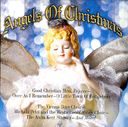


![The Royal Wedding: The Official Album [2011] (Live) The Royal Wedding: The Official Album [2011]](https://d1wj8oqehjepyy.cloudfront.net/i/boxart/w128/70/66/602527706627.jpg?v=5)


